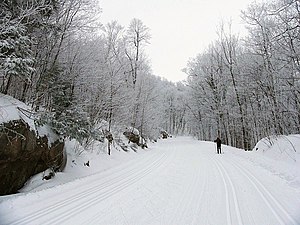
You can feel it when you walk outside. The breeze bites, a layer of frost rests on car windshields, and coffee shop signs have been colored orange with the arrival of pumpkin-flavored everything.
Yes, the seasons will soon be changing. Fall? Winter? No, this is Colorado. That means ski season.
Downhill skiing is the king of winter sports among CSU students. Anyone with an outdoorsy bone in their body can be seen dropping hundreds on lift tickets and attending gear swaps in anticipation of the coming weekend. I think that it’s excellent that students are getting outside. It would be a shame not to at a school in such close proximity to the largest mountain range in North America.
While I am not out to ruin anyone’s fun and certainly do not want to see students spending their college careers cooped up inside, I feel that the environmental impacts of the ski industry raise some hard questions about whether or not skiing is worth it.
We don’t often think of skiing as being harmful to the environment. How could something that gets people into the mountains be bad? Next time you go skiing you may notice that ski runs at resorts are devoid of trees. Good for skier safety, I’m sure, but building those runs involves clear-cutting fragile alpine forests. Even where there are no trees, grading slopes with bulldozers rips up vegetation that is already hard-pressed to survive in a harsh climate. Major ski resorts also have a numerous large buildings and often miles of roads that were constructed solely for the purpose of serving the resort and represent additional habitat loss.
Those are the most obvious effects, but not nearly the only ones.
The environmental impacts of skiing go beyond habitat destruction. Snowmaking produces an unnaturally long snowpack which is often laced with salts, human presence causes harmful stress in birds, parking lots and roads leach harmful chemicals into fragile ecosystems, and plant loss contributes to erosion that strips away the mountains’ hard earned soil. These and numerous other factors creating lasting damage that, in these slow growing ecosystems, will persist long after our lifetimes.
Skiing is fun for all of us, but can pose major threats to unique alpine life.
This leaves us with a tough question about downhill skiing. Is it worth it to rip up alpine ecosystems and build fancy resorts that bring our industrial way of life into once pristine mountains in order to let us slide down hills with sticks on our feet?
As it stands we seem to have decided that a few hours of human fun are more worthwhile than the health of those rare and resilient organisms that cling to life in a hostile habitat. We need to remember that humans are not the only species that inhabit this earth, and what we do simply for fun often poses unseen threats to this planet’s health.
Most skiers I know love the mountains. They do not go hit the slopes with the intent of tearing up ecosystems. Many simply are not aware that what they are doing is harmful. However, the facts show that the ski industry causes lasting damage to the environment, and to me these costs outweigh the benefit that we get from downhill skiing.
This does not mean that I do not want you to have fun. If you must downhill ski, organizations such as the Ski Area Citizens’ Coalition give grades to resorts based on the environmental responsibility. For the more adventurous, backcountry skiing provides an eco-friendly opportunity. This winter you’ll see me on my cross-country skis, which do virtually no environmental damage and don’t require pricey lift passes.
But before your next trip to the mountains, ask yourself, “Is this really worth it?”
Aaron Kolb is a freshman environmental engineering major. Letters and feedback can be sent to letters@collegian.com.





